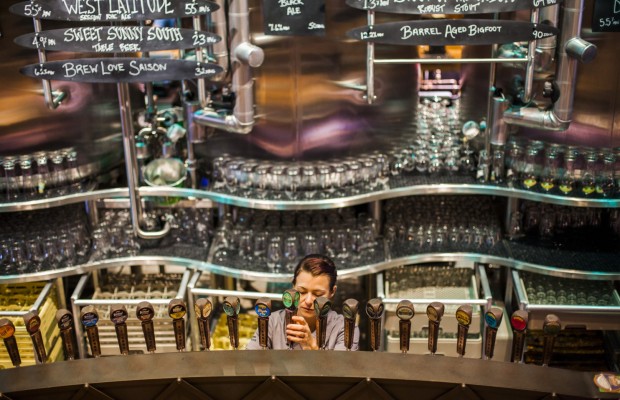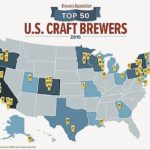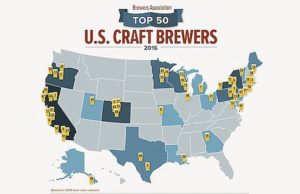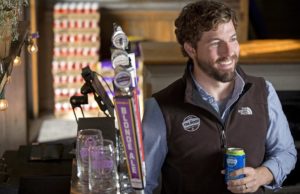The Bible Belt Revolts

ASHEVILLE, N.C. — In the beginning, Walt Dickinson was just a rock-climbing-guide turned rainwater-collection-system salesman who couldn’t find a decent beer in his home state and decided to start making his own at home.
“It was a wasteland,” he says of North Carolina and surrounding states. “There was no good IPA in the Southeast.”
Century Old Laws
The reason the region wasn’t producing hoppy, piney, West Coast-style India pale ales, the type that dominate craft sales around the country? Stifling government regulation. Century-old laws made it nearly impossible to start a craft brewery across the South and Mid-Atlantic. And when lawmakers began to repeal those laws, starting with North Carolina in 2005, Dickinson and other enterprising brewers took advantage.
Dickinson and his brother, Luke, rounded up capital — $3 million within six months — from family friends and in late 2012 started Wicked Weed, a purveyor of IPAs, sour ales and other malted varieties that is now the fastest-growing homegrown brewery in Asheville. The Asheville area has at least 23 craft breweries and 90,000 residents, the densest concentration in the United States. North Carolina’s microbrew production has increased 600 percent, to 675,000 barrels in 2015, just in four years.
The Times They Are a Changing
Similar stories are playing out in Virginia and South Carolina — opening a market for local entrepreneurs and, at a much larger scale, big craft players from the Western states where government hurdles were never a problem.
The proliferation of craft brewing on the East Coast is a case study in how government regulation can block entrepreneurship for decades — and leave entire regions playing catch-up when it is finally relaxed.
New business creation is slowing across the country and in most industries, but not in the world of beer. The industry is dominated by a few big players, led by the soon-to-be-merged SAB Miller and Anheuser-Busch InBev. But smaller competitors, peddling wide varieties of stronger and more flavorful beer, are popping up everywhere to steal market share.
There were 2,347 craft breweries in the United States in 2012, according to the Brewers Association, a trade group, and they combined for 12 percent of the country’s beer sales in dollar terms. The sales share grew to 21 percent in 2015. By year’s end, if trends hold, there will be 5,000 craft breweries nationwide.
Go West Young Man
Four Western states house more than a quarter of those breweries: California, Washington, Oregon and Colorado, which have long been havens for the hoppy India pale ales that form the liquid foundation of the craft industry. The Midwest and Northeast also boast strong craft scenes.
The Mid-Atlantic is finally on its way. From 2005 to 2012, North Carolina lawmakers steadily repealed laws — Bible Belt leftovers from the end of Prohibition nearly a century earlier — that had stifled brewers from making and selling craft beer.
They lifted restrictions on how much alcohol a beer could include by volume, which had effectively banned many of the most popular craft styles. They began allowing larger craft breweries to sell their products on site, opening the way for small-volume brew houses. And they made it easier for some smaller breweries to distribute beer to stores and bars.
None of that would have been possible under North Carolina’s old blue laws, Dickinson said. As similar laws fall around the South, in states such as Georgia and Tennessee, breweries like Wicked Weed could see growth opportunities — although the West Coast brewers will probably see more.



















